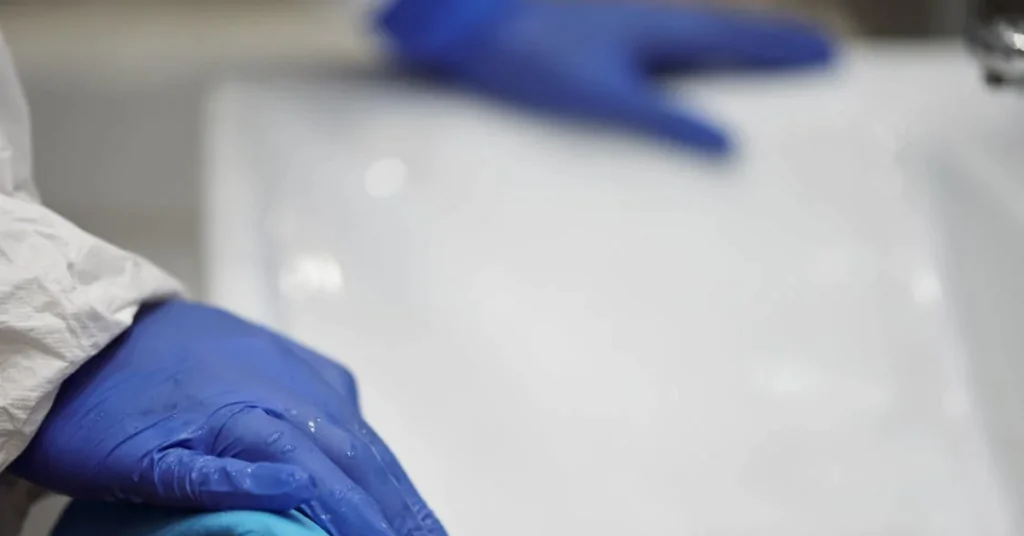Fogging To Decontaminate, Deodorize, Or Even As An Insecticide

Chlorine dioxide is a highly effective disinfectant that can be applied in a variety of settings for use in buildings or vehicle air circulation systems. When used for fogging, it can help to deodorize and decontaminate large areas, quickly and effectively, and leave a fresh-clean scent behind. Fogging or Housing to Deodorize, or Even as an Insecticide. And, it can even be used as an insecticide to control mites, bedbugs, ticks, fleas, cockroaches, and their eggs.
It is also often used in HVAC systems to help purify the air and prevent the spread of illness. Include air handling systems, penetrate through HEPA filters, navigate turns and bends of the ductwork, and stop microorganism growth. Excellent compatibility with HEPA components constructed of aluminum or stainless steel.
Chlorine dioxide has been used for fogging, HVAC, fleets, factories, institutions, and houses for many years. Here, we will discuss the benefits of chlorine dioxide and how it can be used in various settings.
Benefits of Using Chlorine Dioxide
1. Chlorine dioxide is a gas that can be used for a variety of purposes, including fogging, HVAC systems, fleets, factories, and institutions
2. It is effective against a wide range of pathogens and is safe to use around people and animals when used properly
3. Chlorine dioxide is very effective, versatile, economical and It can be purchased in bulk, it is easy to store and transport.
4. There are many applications for chlorine dioxide and it is an important tool for public health officials and business owners alike
5. It is also safe to use around people and animals. In addition, chlorine dioxide is economical and easy to use.
If you are considering using chlorine dioxide, it is important to make sure that you follow the instructions carefully. Fogging or Housing to Deodorize, or Even as an Insecticide. This will ensure you get the most out of the product and avoid potential safety hazards.
If you are looking for a highly effective disinfectant, chlorine dioxide is an excellent choice. It can be used in a variety of settings and has many benefits. One of the main benefits of chlorine dioxide is that it is safe for the environment. This makes it an ideal choice for businesses that are looking to be more sustainable. Indoor pollution is blown around through air ducts, filters, furnaces, and ventilation providing a breeding environment for pollutants and allergens. Chlorine dioxide is also an effective insecticide, making it a good choice for businesses looking to control pests.

How To Use Chlorine Dioxide For Hvac, Fleets, Factories, Institutions Or Housing
| In An Hvac System | A Properly Calibrated Cold Fogger | Fleets, Factories, Institutions, Or Housing |
| 1. Fogging machine is connected to the ductwork and the system is turned on 2. Chlorine dioxide gas is then injected into the airstream 3. Circulates through the system and sanitizes all surfaces | 1. Generate the ideal size and density of droplets for effective decontamination 2. An effective insecticide and can be used to control pests in these settings 3. Foggers are available in both portable and truck-mounted models. | 1. It can be injected into the water supply for continual sanitization 2. Added to wash water for trucks and other vehicles 3. Or, used in a fogging machine to sanitize large areas |
When using chlorine dioxide, it is important to follow safety protocols to protect yourself and those around you.
STERILIZING DISINFECTANT FOGGING AND SANITIZING – RESIDENTIAL, COMMERCIAL AND INDUSTRIAL.
Use for public access, professional HVAC, filters, air ducts, ventilation, motor vehicles, fleets, R.V.s, buses, gym, hotel, church, animal shelter) and other public facilities/industrial applications. The OSHA STEL value to which ClO2 in the case of the workplace atmosphere is 0.30 PPM concentration tolerable for a 15 min period without any damage. Each gallon will treat approximately 1,000 – 1,500 sq. ft. of surface. Prepare activated solution to a strength consistent with the maximum threshold for a strength consistent with use as a commercial fogging agent, mechanical coarse, hand pump, surfaces in medical facilities, livestock areas, where a powerful biocide is needed, to remove airborne pathogens, for water damage and mold remediation on porous, and NON-porous surfaces including concrete, asphalt, (sub)floor, carpet, and turf.
| Use-Site | CONCENTRATION | Mix EQUAL PARTS 1:1 – NaClO2 (Part A) and HCl (Part B) |
| Light – Non-Food Contact | 50 PPM | 50 drops A, with 50 drops B in 1 gallon of water. (2ml = 50 drops) |
| Moderate – Non-Food Contact | 100 PPM | 100 drops A, with 100 drops B in 1 gallon of water. (4ml = 100 drops) |
| Heavy – Non-Food Contact | 200 PPM | 200 drops A, with 200 drops B in 1 gallon of water. (8ml = 200 drops) |
| HVAC – Vents and Air Ducts | 500 PPM | 500 drops A, with 500 drops B in 1 gallon of water. (20ml = 500 drops) |
| Insecticide or Fumigant | 725 PPM | 725 drops A, with 725 drops B in 1 gallon of water. (29ml = 725 drops) |
Use as a solution or as a spray, in a manner consistent with usual standards.
Mix in the bottom corner of a designated plastic mixing container. Use as a solution or as a spray, in a manner consistent with usual standards. Fogging is to be used as an adjunct to acceptable manual cleaning and disinfecting for room and environmental surfaces. NIOSH / MSHA approved respirator with an Organic Vapor / Acid Gas Cartridge.
REFERENCES.
Biological Agents, P. 199. Discovery Publishing House. S.K. Prasad. Jan. 2009.
Can Chlorine Dioxide Prevent the Spreading of Coronavirus or Other Viral Infections? K. Kály-Kullai, M. Wittmann. Mar. 2020.
Chlorine Dioxide Gas Decontamination of Large Animal Hospital Intensive and Neonatal Care Units, P. 144-154. Applied Biosafety 11(3) Henry S. Luftman. © Absa 2006.
Inactivation of Enteric Adenovirus and Feline Calicivirus by Chlorine Dioxide, p. 3100–3105. National Center for Biotechnology. Jeanette A. June 2005.
Prevention and Control of Norovirus Gastroenteritis Outbreaks in Healthcare Settings. Division of Healthcare. Taranisia MacCannell, Craig A. Umscheid. 2011.
Infections and Infectious Diseases. World Health Organization Regional Office for Europe. 2001.
CHLORINE DIOXIDE | Occupational Safety and Health Administration. OSHA Occupational Chemical Database. Dec. 2020.
Reregistration Eligibility Decision (RED) for Chlorine Dioxide and Sodium Chlorite (Case 4023). Prevention, Pesticides and Toxic Substances. Aug. 2006.
Insecticide and Insecticidal Method. Takanori Miura Mitsukatsu Yatagai. Aug. 2012.



